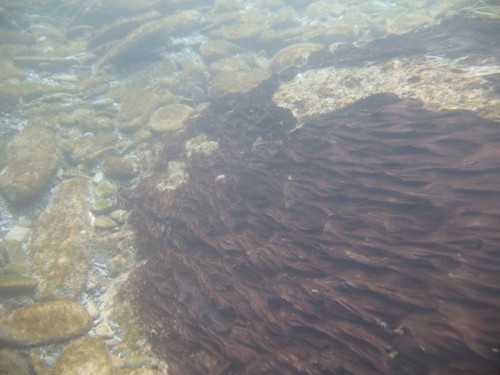Otago Regional Council (ORC) water quality samples show high levels of bacteria in some locations.
Sample results completed on 17 December indicated elevated levels of bacteria present at:
- Lake Wakatipu at Queenstown Bay – 816 E. coli/100mL
- Lake Hayes at Mill Creek Shallows – 687 E. coli/100mL
- Lake Dunstan at Alpha Street – 2420 E. coli/100mL
- Kakanui River at Clifton Falls – 649 E. coli/100mL.
This warning has been in place for since 10 December 2018. The elevated levels of bacteria are likely to be from endangered Black-billed gulls that nest upstream. We are awaiting faecal source tracking data before we can confirm this and make steps to improve the health of the river.
Government water quality guidelines for recreational swimming areas are that those with less than 260 E. coli/100mL should be safe, whereas water with more than 550 E. coli/100mL poses a health risk.
Queenstown Lakes District Council (QLDC) has since retested water at Queenstown Bay and Lake Hayes and found the bacteria levels to be within safe levels for swimming. These results can be viewed on the LAWA website:
- Lake Wakatipu at Queenstown Bay – 10 E. coli/100mL
- Lake Hayes – 39 E. coli/100mL
Swim warning signage is in place at Lake Dunstan and Kakanui River.
For the latest results on swimming holes in Otago and throughout New Zealand, please refer to the LAWA “Can I swim here?” tool at:
Phormidium (toxic algae) present at Hawea River at Camp Hill Road
Phormidium has been sighted Hawea River, upstream of Camphill Road bridge. Warning signage is in place at this site and it is likely this alert will be in place throughout the summer season.
Exposure to cyanobacteria (Phormidium being the primary species of benthic cyanobacteria found in Otago) in humans may cause symptoms such as skin rashes, nausea, tummy upset, and tingling and numbness around the mouth or tips of fingers. Anyone experiencing health symptoms after contact with contaminated water should visit their doctor. Southern DHB Medical Officer of Health can be contacted on (03) 474 0999 to provide health professionals with information about those symptoms.
For dog owners, when a cyanobacteria alert is in place, it is important that dogs are kept on a lead, out of the water and that they do not consume vegetation from the water’s edge. Signs that a dog has been poisoned by toxic algae can include lethargy, muscle tremors, fast breathing, twitching, paralysis and convulsions. It is important to treat the first signs of illness as an emergency and contact your vet immediately.
ORC encourages dog owners to familiarise themselves with Phormidium and know what to look for when exercising dogs in or around rivers.
https://www.lawa.org.nz/learn/factsheets/potentially-toxic-algae/

FOR FURTHER INFORMATION CONTACT
Rachel Ozanne
ORC Environmental Resource Scientist
0276072781
Rachel.ozanne@orc.govt.nz
FOR COMMUNICATIONS CONTACT
Emma Schranz
ORC Senior Media Advisor
0276275894
media@orc.govt.nz
